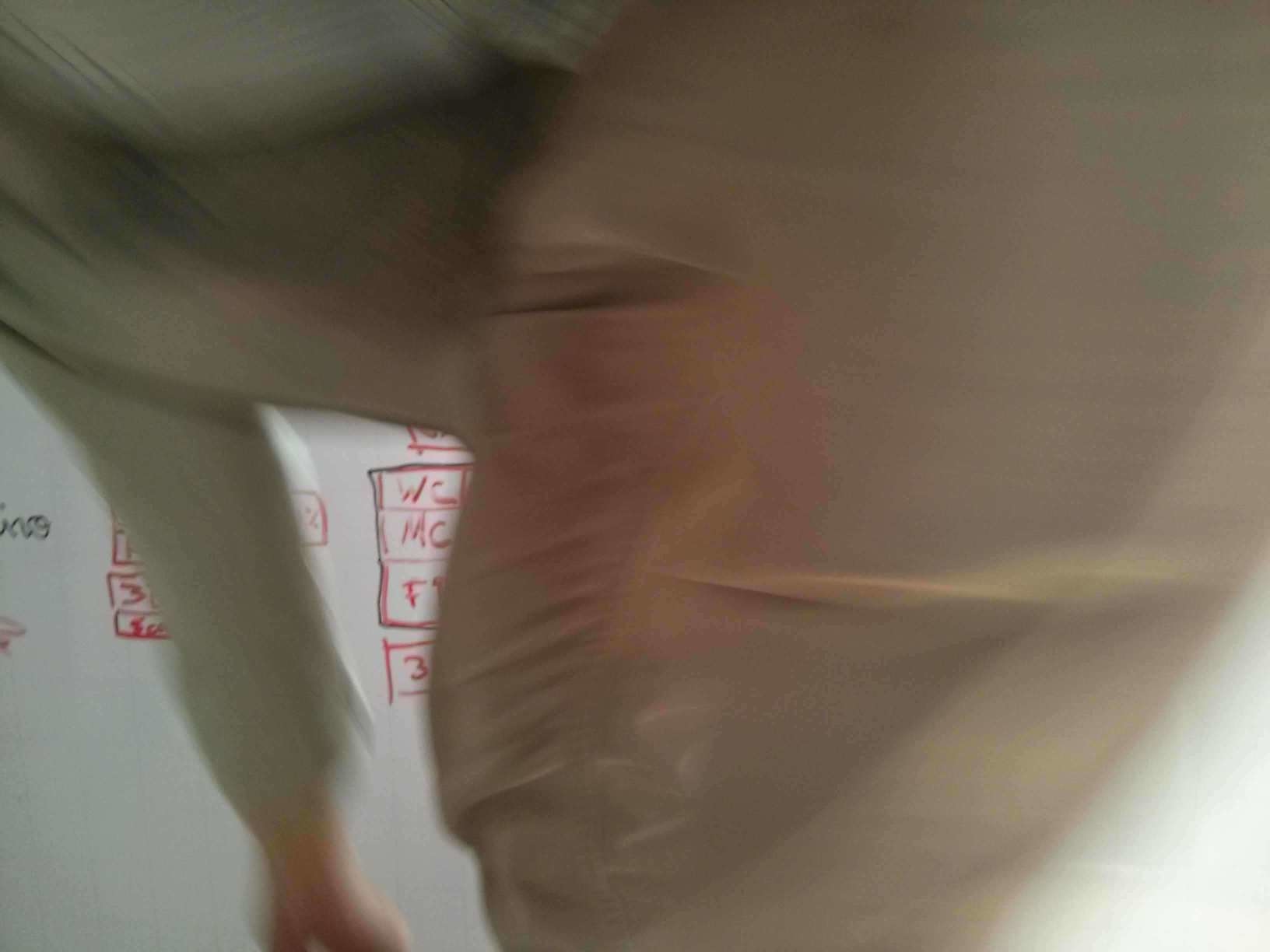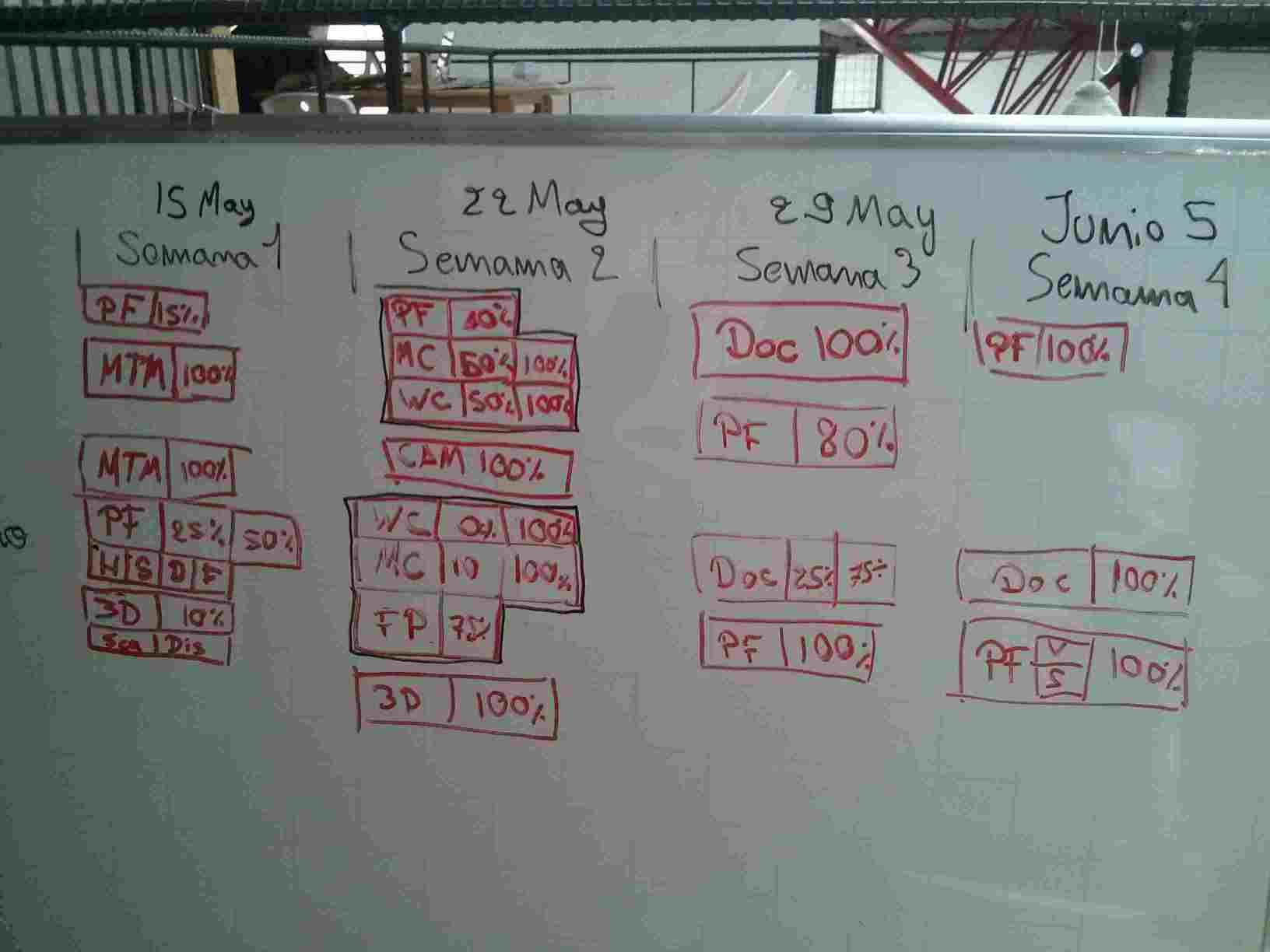Project Development
Evaluate project plan
The project started as a big endeavor. But many iterations in spiral development must be run before a viable product or even a realistic social structure is attained. Nevertheless, the achievement of a simple telecommunications device is a great step towards that goal.
Time management
Several time schedules have been made. But the deadlines had not been met.
The good news is that the assignments were directed towards advancing my final project. And small steps going around making small achievements in my final project such as: transmitting with light, receiving with light and making that transmission-reception digital, has made the advancement reach to a minimum viable goal a success.
Short project summary
Do you want connect to InterNet without barriers, contracts or never ending payments? We are building the Libre Net NOW. Come fly with us!
TeleKIT is a project to connect with your neighbors and them with their neighbors. It is light communication in line of site. So there are no government or corporate control restrictions. If enough connections are made, all of us can be interconnected around the World.
Completed tasks
Communication of two remote points by light signaling.
Pending tasks
- Conversion of ASCII data to binary.
- Blinking of the LASER LED at the rate of the binary data.
- Conversion of the binary data to ASCII.
- Manufacture of case.
Achievements
- 32 meter remote communication
Failures
- 10 Mb/s, 1.4 km communication
To Do
- Package project nicely
- Establish communication with computers
- Complete assignments
- Finish documentation
Plan Schedule
My instructor Roberto told me to make a table on my web page with the plan schedule. He crossed by while I took a photo of the draft on the whiteboard!

This is the first schedule draft.

It is the picture for follow-up. The lower part is mine. I made an html table below.
| Work schedule |
|---|
| May 14 | OpenKinect | Embedded programming |
|---|
| May 21 | 3D Design in Mods | 4 phases of Molding and Casting the Parabola and the Case |
|---|
| May 28 | Documentation catch-up | Final project integration |
|---|
| Jun 04 | Documentation polishing | Final project video and slide |
|---|
I am not up to date with my schedule. As of today, may 24, I have been able to finish the design of my cast for jewelery in the Wildcard week and the design of the cast which will give form to my cast to mold the paraboloid mirror in the Molding and Casting week. Nevertheless, I have not made the casts themselves yet.
I could achieve several milestones by June 6. I was able to communicate at 32 meters by way of a laser pointer connected to one of the PCB boards. The other side of the communication has a photo-transistor connected to the other board. So I have finished electronic design, output devices, input devices, embedded programming and networking assignments with this achievement. Now I need to update documentation of these assignments and update the other assignments' documentation too. Besides that, I must integrate the final project on a nice presentation and make its video and slide.
I should have completed all my assignments, finished my final project and come up-to-date on the documentation by June 4. So now I have to make another schedule.
- June 7
Finish documentation for:
- June 8
- Design case for final project.
- Transform 3D designs to Gcode for:
- Machine those parts.
- Document all these tasks on-the-go.
- June 9
- Document unfinished available photos and tasks from the other weeks:
- Integrate the final project.
- Film and take photos of final project.
- Document project integration.
- June 10
- Edit final project video
- make final project slide
- Upload to them to the project root directory
- June 11
- 3D scan
- print in 3D
- Document scaning and printing
Last Work schedule
As of today, June 7, I have not been able to comply with my schedule. This is my last schedule.
- June 12
- Finish documentation with introduction and conclusion for each assignment.
- June 13
- Design and construct case for final project.
- June 14
- Finish 3D scanning and printing assignment
- June 15
- Finish molding and casting assignment
- June 16
- Finish wildcard assignment
- June 17
- Review all documentation is good
Deadline for final project: 2018 June 18 16h00 ECT
Lessons Learned
Project planning
- Make a better overview of the project before planing. It must not be more detailed but more holistic, generalized according to the most hefty circumstances.
- Plan for a small achievement. Later, if successful, you can make a greater plan.
- Comply with schedule. It is better to achieve little on time than achieving greatness out of schedule. Greatness is nothing if not at the appropriate moment!
- Show the project when it is well presented and finished. It brings more support than when people see its small advancements.
- Teamwork has great potential when good communication skills are used to grant a comfortable and motivating social environment. The Github infrastructure is a great tool to work in a team.
Project development must be based on a clear objective and some basic baselines for its success:
- Learning to work to schedule and not to a task helps achieve more.
- Spiral development makes complete versions of your project on each round. Each time you evaluate what you are doing. You can steer the development of the project on every iteration.
- System integration early-on is essential for the project to be functional.
Visible line of site telecommunications
- It is not difficult to make VLC. What is not easy is to achieve long distances and high transmission speeds. I must experiment with both
- Pointing the light ray is very difficult at short distances. It must be even harder at one or more kilometers. To move the pointing device one of these must be used:
- manual screws with eyesight pointing (using protection)
- small servo motors with some form of automatic orientation
A node mounted on a high pole will be a difficult place to reach in order to point the light rays. A low cost and easy method must developed.
- 7 bit parallel communication: Currently transmission speed is 10 kilobits per second (kb/s). But 1 bit can be used with each of the seven colors generated by combination of the 3 RGB LEDs. This makes transmission speed 7 times faster. Each color can communicate with one photo-transistor to detect only that color if:
- it is designed for such characteristic
- the light is polarized to only one color before reaching it
Speeds of 30 kb/s to 70 kb/s can be reached with the current LED and photo-transistor used.
All visible and invisible color spectrum can be used if the photo-transistor distinguishes what color it receives. The possibilities are endless and only depend upon the color sensitivity and speed of other LEDs and photo-transistors: perhaps 32, 256, 16000 or more colors and 10 million, 1000 million or more pulses per second. Those multipliers would define the communication speed to reach 32 Mb/s to 16 Tb/s or more.
20 Mhz is the top speed of the AT Tiny 44. So only 20 Mb/s can be reached if the transmission is with only one color LED with that MCU. If more colors are used, the transmission speed results the multiplication of the number of colors with the clock speed at which the MCU works.
- Distance can be extended if:
- collimation of the rays is of greater quality
- diameter of transmission increases
- intensity of light grows
Interference is not caused by nearby transmissions (as is with radio frequency). In VLC, it is caused by particles in air. Interference increases geometrically with distance: at 1 km the intensity of light is twice as high as at 2 km and half of the intensity at 0.5 km. So at 2 km the intensity must be 26 (32) times greater than at 32 m.
Recommendations for making a better FabAcademy
Note: Perhaps the following text should go into another section or should not be mentioned at all.
These are suggestions I can help implement if given enough freedom to collaborate with FabAcademy in the future. They could help the people in charge if they manage to invest a little time on these in order to get better student results and save time and resources latter.
- Learning is a ludic process. It cannot be attained as an obligation or as a requirement. Thus the achievement of the objectives of any course must not be to learn what a syllabus covers but to achieve the personal objectives of the student.
- Learning how to do all lessons of FabAcademy or even to knowing how to complete all abilities required for your final project is not important. The important thing is to find the resources to attain the personal goals in a well structured way for it to be sustainable socially, economically, physically, ecologically and (even more important) psychologically.
- Completion of the requirements of FabAcademy is a very demanding process. But it does not have to be so. It is only difficult if the appropriate motivation is not in place. Motivation is not a self-induced process. It is dependent on the personal circumstances. Nevertheless, when a person knows what affects their own or others' circumstances, she can change the environment to promote the motivation required for those objectives come to fruition. This is how media social constructs consent. But this technique could be used in a less psychopathic approach as is the construction of a more collaborative society.
- I reported several issues to the GitLab issue tracker. It would be very useful to have a more collaborative participation of all students and alumni to answer issues in a group effort.
- It would be interesting that teams throughout the World work together to make projects by way of combining abilities of each member instead of making everyone learn all of the skills in the curricula.
- In order to have the appropriate infrastructure for FabAcademy students to learn all skills needed to pass FabAcademy it would be useful to have financial mentors and skills mentors that the students could reach in order to solve issues that might hinder their advancement. It is important to avoid corporations and instead try to collaborate in order to generate this mentor ecosystem.

